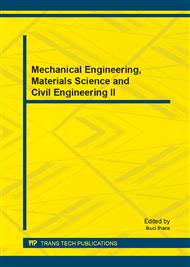p.992
p.998
p.1003
p.1007
p.1011
p.1015
p.1020
p.1024
p.1028
A Study on the Estimation of Economic Loss Costs due to Seismic Damage of Low Rise Steel Structures
Abstract:
Economic losses due to seismic structural damage are growing up due to urbanization, civilization, etc. Recently, quantitative evaluation methods for direct and indirect seismic structural damage have been increasingly studied. A Hazus system developed by the FEMA provides a methodology that can predict direct and indirect economic seismic losses of various building types using probabilistic approaches. Based on the Hazus system, an Earthquake Disaster Response System (EDRS) has been developed in Korea considering the unique characteristics of domestic buildings and seismic environment of Korea Peninsula. This paper presents the methodology that can calculate direct economic losses resulting from structural damage due to earthquakes potentially occurring in Korea Peninsula. This study explains the process computing direct economic losses causing from structural seismic damage and then presents how to obtain data required for the process and how to manage the obtained data. Finally, low-rise steel moment-resisting buildings is selected as an example in order to specifically present a stepwise process for the calculation of direct economic losses due to structural seismic damage.
Info:
Periodical:
Pages:
1011-1014
Citation:
Online since:
December 2013
Authors:
Price:
Сopyright:
© 2014 Trans Tech Publications Ltd. All Rights Reserved
Share:
Citation:


